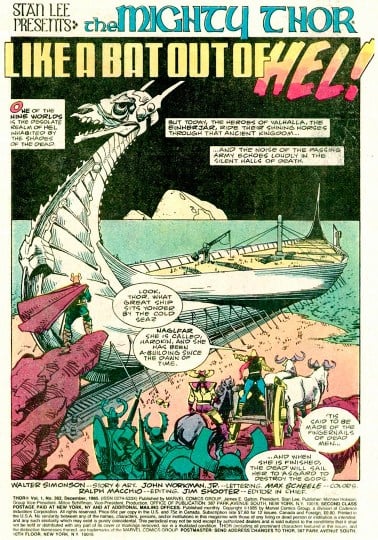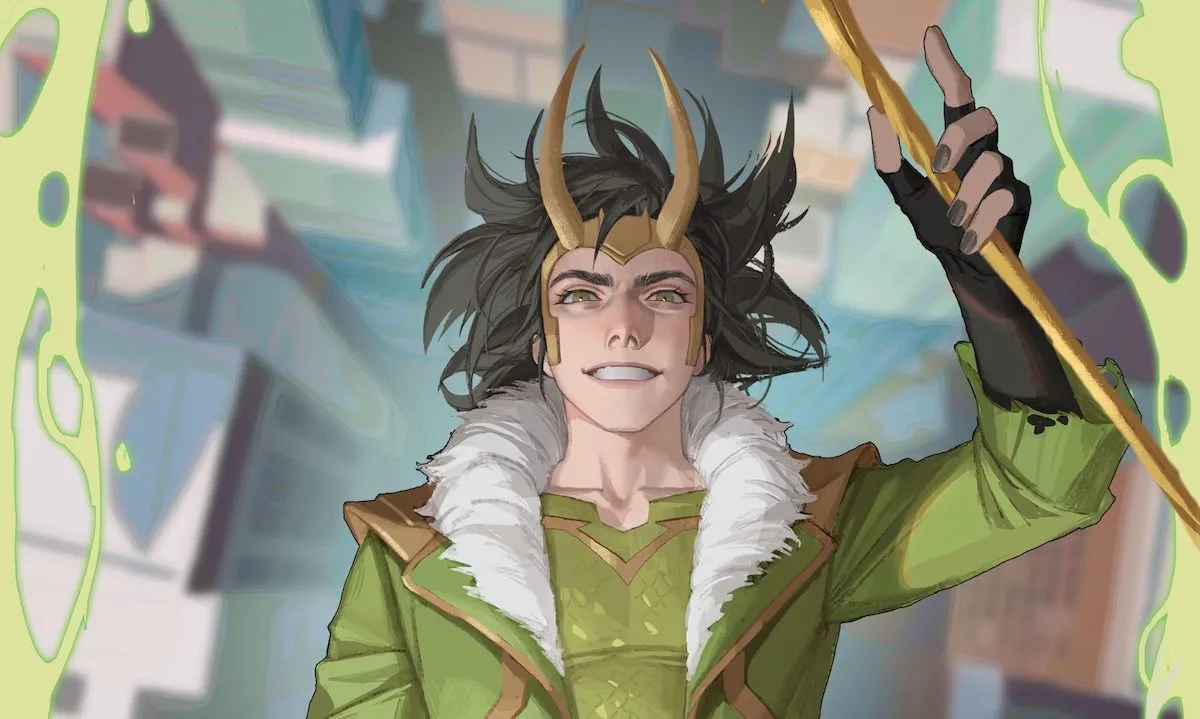Loki season 2 on Disney+ is sadly delayed, with some new rumors reporting that it may come out as late as October 2023. However, Marvel hasn’t forgotten us Loki fans—a new four-part Loki comic book series, written by Dan Watters and drawn by Germán Peralta, hits shelves in less than a month.
In the new series, Loki has to retrieve a collection of ancient weapons that he forged back when he was a villain, before his death and resurrection as an anti-hero. Judging from new artwork that has appeared online, one of those weapons may be the fabled Naglfar: the ship made of the finger and toenails of the dead.
Watters himself tweeted out the image, with the caption “The Norsemen knew the god of mischief had been building a warship since the dawn of time, to sail against the gods of Asgard. And in lieu of planks of oak, he was using the ragged fingernails of the dead.”
Yep. You see that giant ship? Those baskets of supplies people are carrying? The big pile Loki is crouching on? Nails. All nails. At least they look like they’ve been cleaned.
Lest you think this is just a grody invention sprung from Watters’ mind, Naglfar (Old Norse for “nail farer”) has been around ever since the Viking days. In Norse mythology, Loki sails it when he leads an army of Jotuns (Frost Giants in the Marvel Cinematic Universe) and the souls of Hel against the gods of Asgard in Ragnarok.
Marvel’s Loki is the best when the writers draw from the Norse myths
This new series is far from the first time Marvel writers have drawn from Norse mythology in their storytelling. For instance, the scene in Loki in which Sif confronts Loki for cutting off her hair is adapted from a myth.
In a recent interview with CBR.com, Watters talked about combining all the stories that have been told about Loki through the centuries, from the Norse Eddas to the MCU:
I think it’s fun to have a version of Loki like ours and try [to] square together all the stories that have been told about them into one version of the character. All the myths, to my mind, are true. They just might be Loki’s version of “true,” which can mean something quite different than it does to the rest of us.
But the introduction of Naglfar and other details from Norse mythology isn’t the only great thing about the upcoming series. Notice the pronouns Watters is using for Loki?
Loki’s using they/them pronouns!
In the comics, Loki is genderfluid, switching back and forth between male and female at will. Marvel writers usually handle Loki’s pronouns by using “he” when Loki’s male and “she” when Loki’s female, and that’s fine—but using they/them acknowledges Loki’s genderfluidity in a way that isn’t often done in the comics or MCU.
You can see more of the pronouns, along with some of Watters’ insights about Loki’s character, in this excerpt from the CBR interview, in which Watters discusses Loki as an anti-hero.
They can be cruel or kind, friend or foe, loving or scornful, utterly depending on their mood, which is all a bit like us a lot of the time, though we don’t like to admit it. Loki’s pretty much in it for themselves but always has people they truly care about. These sorts of ambiguous places and grey moral areas are exactly what I think we write stories to try [to] grapple with. How could a god of stories really be any other way?
The first issue of the new Loki comics series comes out on June 7!
UPDATE: One Loki fan points out that this isn’t the first time we’ve seen Naglfar in Marvel history! Naglfar also appeared in Thor #362, which came out in 1966.

(featured image: Marvel)










Published: May 8, 2023 04:11 pm